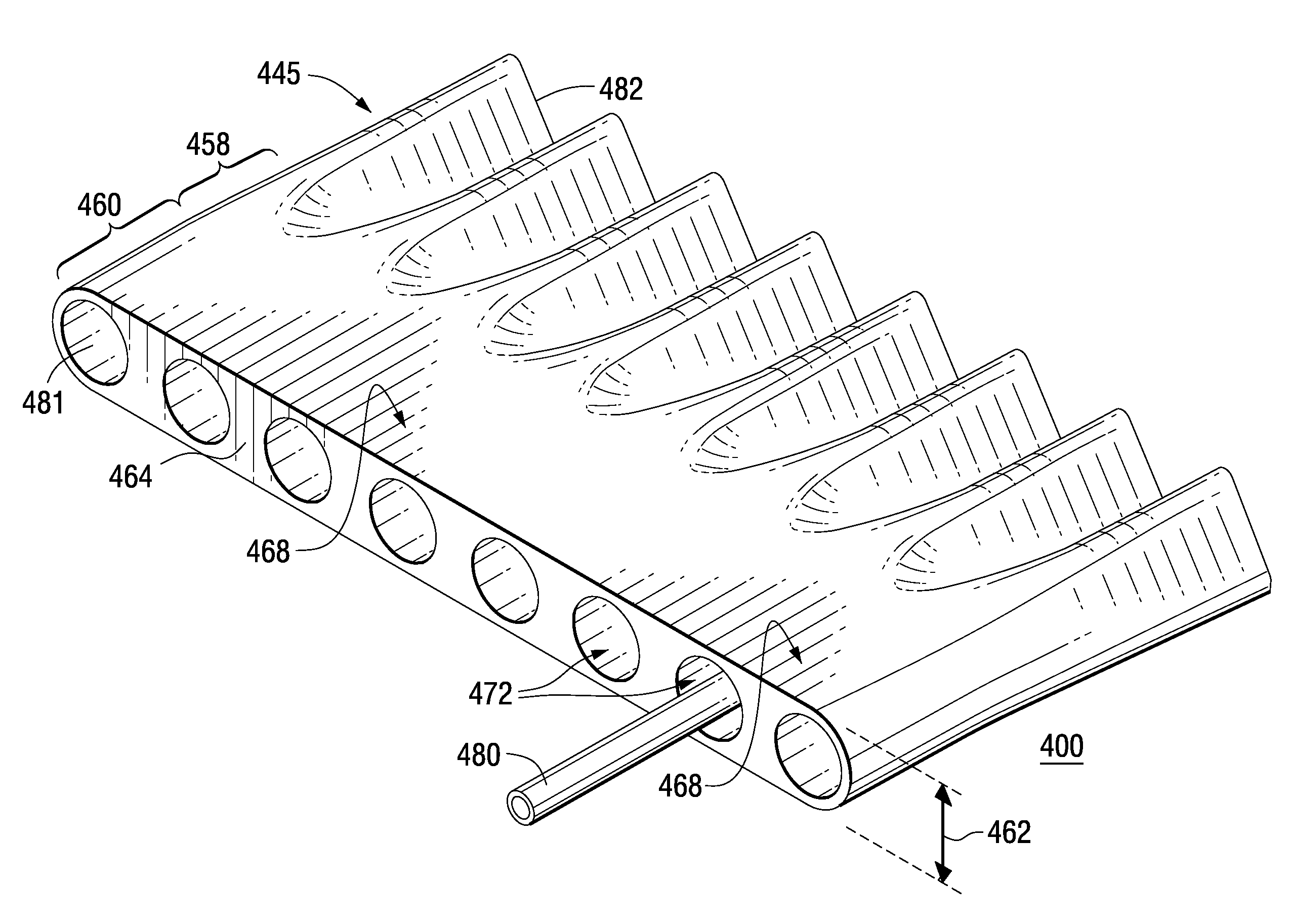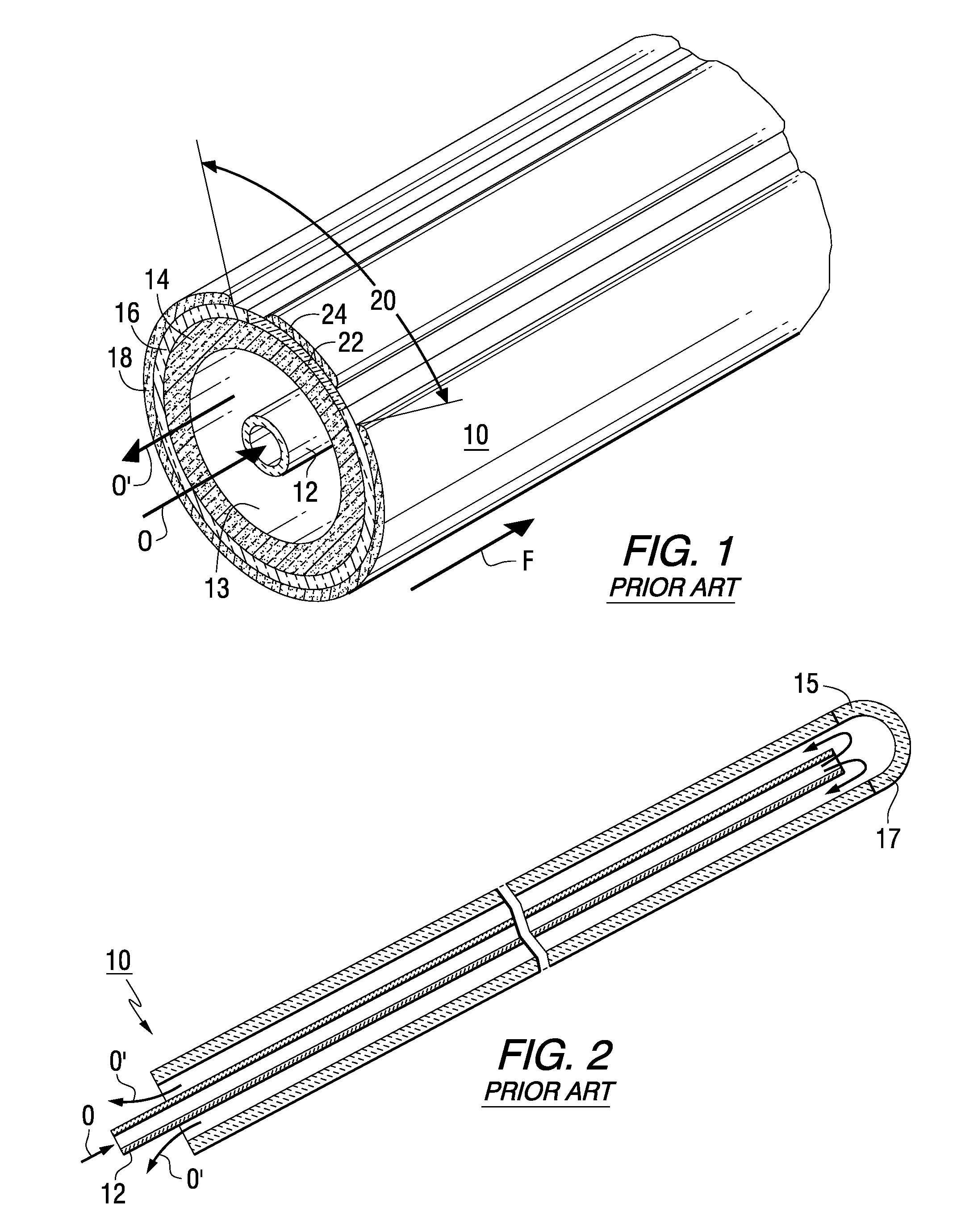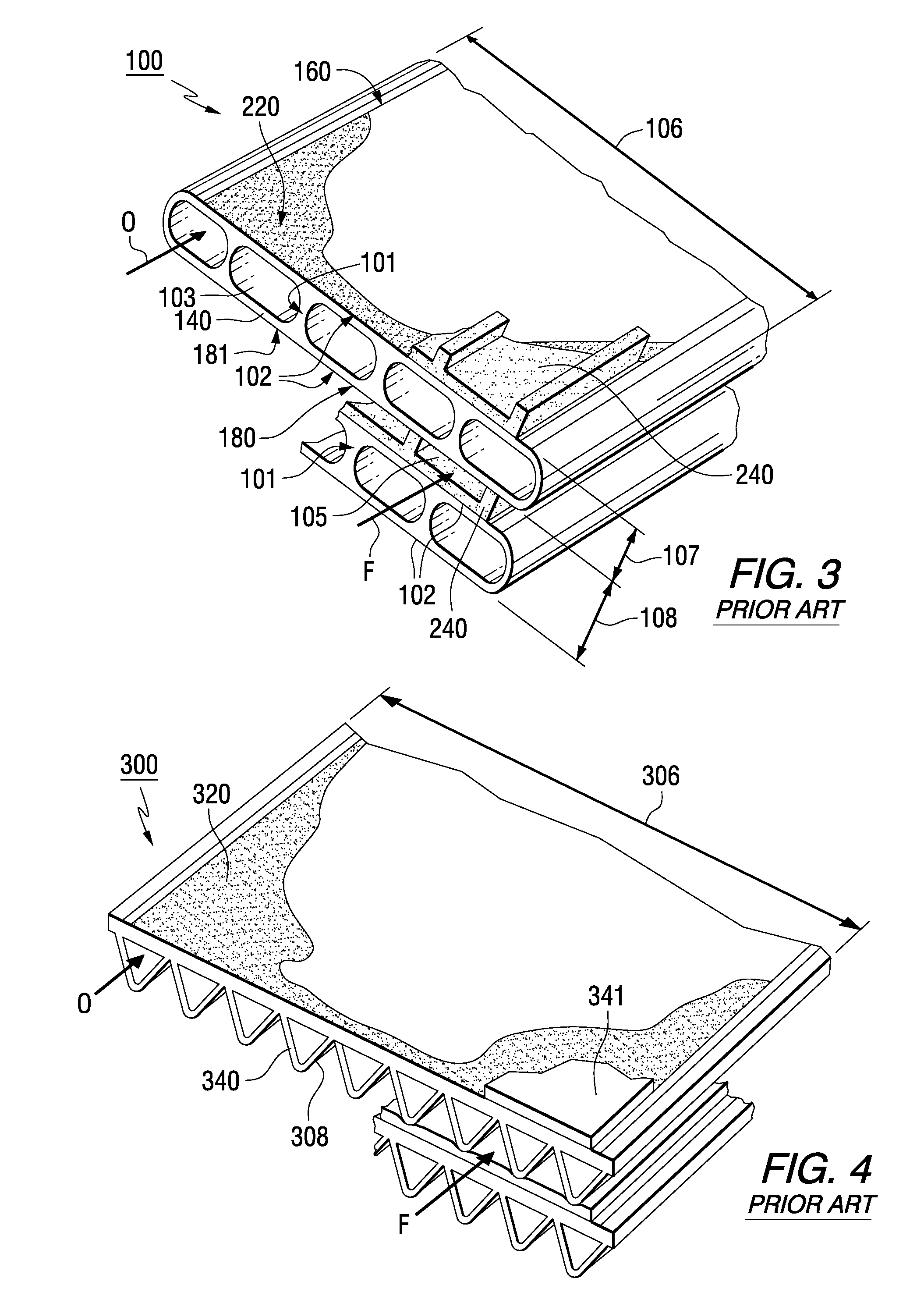Solid oxide fuel cell with transitioned cross-section for improved anode gas management at the open end
a fuel cell and cross-section technology, applied in the direction of fuel cells, solid electrolyte fuel cells, cell components, etc., can solve the problems of long current path, limited power density, and potential bowing of sofcs, and achieve the effect of high current density design
- Summary
- Abstract
- Description
- Claims
- Application Information
AI Technical Summary
Benefits of technology
Problems solved by technology
Method used
Image
Examples
Embodiment Construction
[0031]Solid oxide electrolyte fuel cell (SOFC) generators usually include a gas-tight, thermally insulated housing which houses individual chambers including a generator chamber and a combustion chamber. The generator chamber, in which power generation occurs, contains a solid oxide fuel cell stack which is made up of an array of connected solid oxide fuel cells, and associated fuel and air distributing equipment. The solid oxide fuel cells contained in the generator chamber can take on a variety of well known configurations, including tubular, flat plate, and corrugated designs.
[0032]FIG. 1 shows a tubular solid oxide fuel cell 10, which operates primarily the same as the other designs, and which will be described here in some detail because of its simplicity, and because its operating characteristics are universal and similar to both flattened and tubular, elongated hollow structured fuel cells such as triangular SOFC's. Most components and materials described for this SOFC will b...
PUM
 Login to View More
Login to View More Abstract
Description
Claims
Application Information
 Login to View More
Login to View More - R&D
- Intellectual Property
- Life Sciences
- Materials
- Tech Scout
- Unparalleled Data Quality
- Higher Quality Content
- 60% Fewer Hallucinations
Browse by: Latest US Patents, China's latest patents, Technical Efficacy Thesaurus, Application Domain, Technology Topic, Popular Technical Reports.
© 2025 PatSnap. All rights reserved.Legal|Privacy policy|Modern Slavery Act Transparency Statement|Sitemap|About US| Contact US: help@patsnap.com



